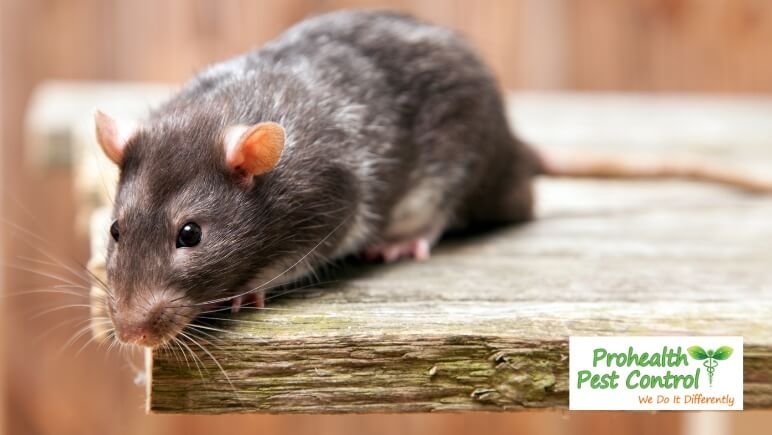Rodents may seem like a small nuisance, but for businesses, they can quickly become a serious operational threat. Whether you run a warehouse, restaurant, manufacturing facility, or retail store, a rodent problem can lead to damaged inventory, health risks, and even regulatory violations. The cost of ignoring the issue goes beyond repairs—it can affect your brand reputation, customer trust, and compliance status.
Proactive rodent control isn’t about reacting when you see a mouse; it’s about preventing infestations before they start. By taking strategic, year-round measures, businesses can protect their property, maintain smooth operations, and avoid expensive disruptions.
The Business Risks of Rodent Infestations
Health Hazards for Employees and Customers
Rodents can carry harmful bacteria like Salmonella and spread diseases such as Hantavirus through droppings, urine, and contaminated surfaces. In industries like food service or healthcare, a single rodent sighting can trigger serious safety concerns.
Damage to Property and Inventory
From chewing electrical wiring to destroying packaging, rodents cause costly damage. Electrical issues from gnawed wires can even result in fires, posing a risk to both property and people.
Impact on Business Reputation
In the age of social media, one photo of a rodent in your facility can harm your image instantly. Negative publicity can lead to lost customers and even long-term brand damage.
Why Proactive Rodent Control Works Better Than Reactive Measures
Stopping Infestations Before They Start
A reactive approach often means you’re already dealing with contamination, damaged goods, and potential downtime. Proactive strategies—like sealing entry points and regular inspections—keep rodents out before they cause problems.
Reducing Long-Term Costs
Investing in preventive measures for rodent control costs far less than addressing a full-scale infestation. Emergency treatments, product losses, and repair work can add up quickly.
Key Elements of a Proactive Rodent Control Program
Thorough Facility Inspections
Professional inspections identify entry points, signs of activity, and conditions that attract rodents. This allows you to address vulnerabilities before they turn into problems.
Structural Rodent-Proofing
Sealing cracks, gaps, and utility openings is one of the most effective ways to keep rodents out. Using durable materials like steel mesh or concrete can block entry points for years.
Sanitation and Waste Management
Rodents are attracted to food waste and clutter. Proactive control includes maintaining clean storage areas, proper waste disposal, and removing debris that could serve as nesting material.
Year-Round Strategies for Different Seasons
Spring and Summer: Reducing Outdoor Attractants
In warmer months, rodents may breed more actively. Keeping outdoor trash bins secure, trimming vegetation, and removing clutter around the property reduces potential nesting areas.
Fall and Winter: Preventing Indoor Shelter
As temperatures drop, rodents look for warmth indoors. Conducting pre-winter inspections and reinforcing entry point seals can prevent seasonal surges in infestations.
Technology in Modern Rodent Control
Monitoring Systems and Sensors
Electronic monitoring devices track rodent activity and alert managers in real time. These tools make it easier to take quick action when needed.
Non-Toxic and Humane Control Options
Many modern rodent control programs use live traps, exclusion devices, and eco-friendly deterrents to minimize harm while maintaining effectiveness.
Rodent Control and Regulatory Compliance
Meeting Industry Standards
Businesses in sectors like food manufacturing, hospitality, and healthcare must meet strict hygiene and safety requirements. Proactive control ensures ongoing compliance with local health codes and industry regulations.
Passing Audits and Inspections
Regular preventive measures reduce the risk of failed inspections, which can lead to fines or temporary shutdowns.
The Role of Employee Training in Rodent Prevention
Creating Awareness
Staff should know how to spot early signs of rodent activity—such as droppings, gnaw marks, or unusual noises—and report them promptly.
Maintaining Good Practices
Proper food storage, waste handling, and cleaning routines can significantly lower the risk of infestation. Employee participation is crucial for any rodent control plan to succeed.
Measuring the Success of Your Rodent Control Plan
Tracking Activity Trends
Monitoring reports and inspection records help identify patterns over time. A steady decline in activity signals that your proactive measures are working.
Adjusting for Better Results
If certain areas consistently show signs of rodent presence, your plan may need adjustments—such as more frequent inspections or targeted treatments.
Conclusion
Rodent problems aren’t just a hygiene issue—they’re a serious operational risk for businesses of all types. By implementing proactive rodent control, you’re not just stopping pests—you’re protecting your property, your staff, and your reputation. Year-round prevention strategies, combined with modern monitoring technology and employee cooperation, create a strong defense against infestations. The result is a safer, cleaner, and more reliable business environment that’s ready to operate without costly interruptions.







